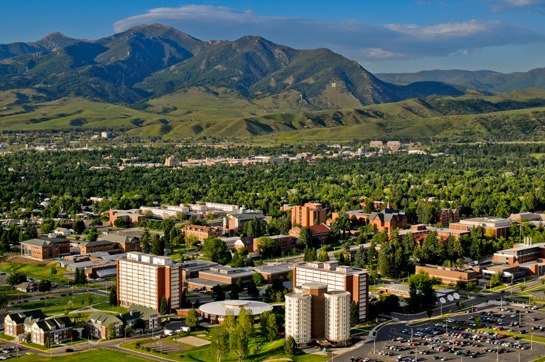 The Bozeman area has the strongest economy for a city with fewer than 50,000 people in the U.S., according to a new national report.
The Bozeman area has the strongest economy for a city with fewer than 50,000 people in the U.S., according to a new national report.
Each year, independent research firm POLICOM ranks areas for “economic strength” — the long-term tendency for a place to grow in size and quality. For a second year in a row, Bozeman topped the micropolitan list.
“The rankings do not reflect the latest ‘hotspot’ or boom town, but the areas which have the best economic foundation,” William H. Fruth, president of POLICOM, said in a statement.
Bozeman was one of 551 micropolitan areas in the report. Each has an urban center of at least 10,000 but fewer than 50,000 people. To ensure it’s more than a fleeting trend, the rankings measured 23 factors over 16 years.
That folded into the equation indicators like how many people in the area rely on government support. Since more jobs could mean businesses switched from full-time employees to part-time workers to avoid paying into benefits, the report authors also looked at total job earnings and wages.
Bozeman’s Director of Economic Development Brit Fontenot said a swelling of Top 10 lists can drown each other out and are typically soon forgotten. But he said the POLICOM list used information from sources like the U.S. Bureau of Economic Analysis and reflects something longer lasting.
“This follows the work we’ve done as a community,” he said.
Bozeman still has some big economic hurdles. Fontenot said there’s three goals constantly on his mind: creating a foundation for well-paying jobs, attracting qualified people to fill those positions and ensuring workers can afford to live in Bozeman.
The economic department can’t influence property values or reduce building costs. But Fontenot said it can focus on trying to bring together pieces that support steady wages.
That means investing in Bozeman’s infrastructure so new businesses can move to town. He said infrastructure goes beyond streets. The plan for a community-based fiber network to boost the area’s internet service grew out of Bozeman’s economic department in 2014.
To ensure people in Montana can fill new roles, Fontenot said the city partners with entities like Gallatin College and Montana State University to develop education programs around jobs employers habitually struggle to fill.
To identify some of those gaps between positions and local talent, the city is working with the Department of Labor, Gallatin Community College and the Bozeman Chamber of Commerce to update the area’s workforce analysis.
“Admittedly, that’s a slow process, and it’s never fast enough for the person that can’t find a place to live,” Fontenot said. “But you don’t pivot housing or the economy on a dime.”
He said that long-term view is more sustainable than hinging a community’s well-being on one industry.
Bozeman wasn’t the only micropolitan town in Montana to make the list. Kalispell ranked 14 and Helena followed at 49th place. The state’s larger cities came later among metropolitan places evaluated. Among 383 areas, Missoula ranked 75th and Billings landed at 87th.
Bozeman will soon compete in that arena. The town’s population is projected to tip beyond 50,000 which will qualify the area as metropolitan.
Fontenot said while the city is on the cusp of that title change — which means some new resources and requirements — Bozeman’s economic strategies won’t need a restart. He said Bozeman already competes with places like Seattle, Portland and Missoula.
“We’re already holding our own against some much, much larger markets,” he said. “People are already moving away from those towns to come to our town.”
Katheryn Houghton can be reached at khoughton@dailychronicle.com or at 582-2628. Follow her on Twitter @K_Hought.

Leave A Comment